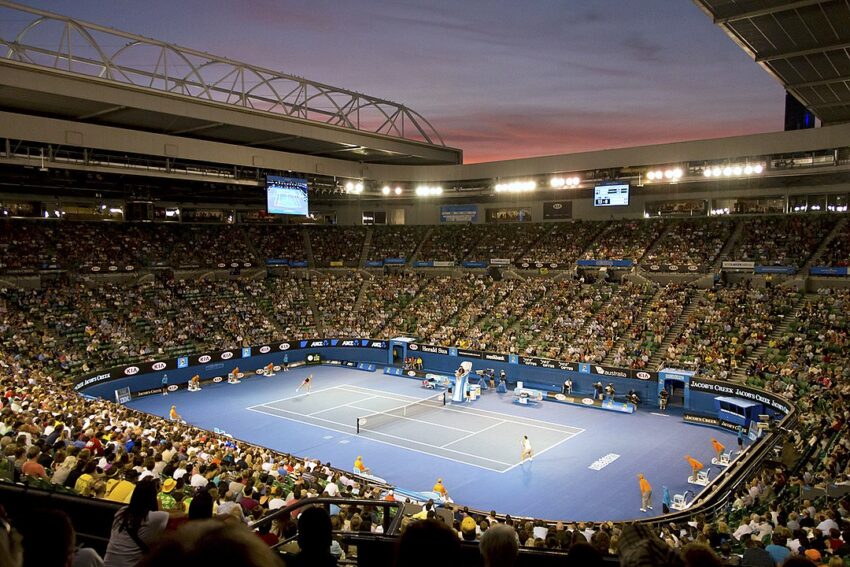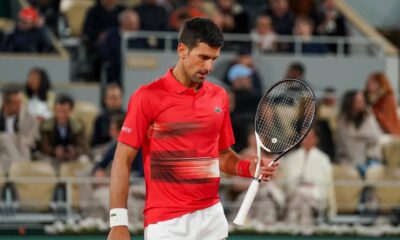Tennis
The Australian Open, a famous tennis tournament with a long history, is about to start
The first edition of the Australian Open was held in 1905 and the 111th edition is scheduled for 16-29 January 2023. Over the course of more than a century of existence, the traditional event has gained a great deal of prestige, but it has also undergone a number of changes. What is its history?

The first edition of the Australian Open was held in 1905 and the 111th edition is scheduled for 16-29 January 2023. Over the course of more than a century of existence, the traditional event has gained great prestige, but it has also undergone a number of changes. What is its history?
Although the Australian International Championships came into existence five years later than the Davis Cup, this year both competitions are hosting the 111th edition at the same time.
In fact, the men’s national teams did not compete for the ‘salad bowl’ in 1901, 1910 and then in the periods 1915-1918 and 1940-1945.
Changes of venues, names and surfaces
The Australian Open, on the other hand, has only had a “hiatus” during the World Wars, and has specifically been absent from the tennis calendar a total of eight times since its creation.
The inaugural, incidentally November, edition was held at Melbourne’s Warehouseman’s Cricket Ground, now known as the Albert Reserve Tennis Centre.
Quite a few venues have changed over the years. As of 2022, 66 editions have been held in Melbourne, seventeen have been played in Sydney, fourteen in Adelaide, seven in Brisbane, three in Perth and once in the New Zealand cities of Christchurch and Hastings.
Incidentally the development of the name should not go unmentioned. Until 1926 it was the Australasian Championships, subsequently it was the Australian Championships.
Since 1969, due to the beginning of the open era of tennis and therefore the new possibility of participation of professionals in the originally amateur tournament, the event is called Australian Open.
The year 1972 marked the definitive relocation to Melbourne, the capital of the state of Victoria in the south-east of Australia.
Sixteen years later came a change of surface, as the event moved from the grass courts of the Kooyong Lawn Tennis Club to the hard-surfaced courts of Melbourne Park.
Other significant changes and traffic issues
However, if we go back even further to the 1920s, we are reminded of two important anniversaries. In 1922, women participated for the first time. The International Tennis Federation then classified the tournament as a ‘major’ in 1924.
Yet, at the beginning, not too many foreign players were present at what is currently one of the most important white sport festivals. This was due to its remote location and the long and arduous travel involved.
In addition, in the old days of the sport, even the domestic tennis players themselves had difficulty getting to the tournament due to the vastness of the country. For example, when the 1906 championships were held in New Zealand, only two Australians travelled to Christchurch.
Legends of the Australian Open
In the last few decades, of course, traffic complications no longer threaten the participation of quality tennis players. The biggest legends of the Australian Open are Novak Djokovic with nine singles triumphs, Roger Federer with six and Andre Agassi with four.
Among the Australian winners, let’s mention Rod Laver or Roy Emerson.
Among the women, the Australian Margaret Court reigns supreme with eleven championships, but seven of them were won in the amateur period of the tournament.
The Open era is dominated by seven-time champion Serena Williams, as well as other winners such as Steffi Graf and Monika Selesova.
Czech footprint
The Czech history remembers one overall victory of its representative in singles. In 1998, Petr Korda won the Norman Brookes Challenge Cup.
Ivan Lendl had previously triumphed for Czechoslovakia in 1989, when he defeated compatriot Miloslav Mecir in the final, and successfully defended the trophy in the following year.
The only female representative of our country to win the singles competition at the Australian Open is Hana Mandlíková.
She lifted the Daphne Akhurst Memorial Cup over her head in 1980 and 1987. Martina Navratilova has already won three finals under the US flag.
In doubles, domestic tennis has celebrated more triumphs. The last time even a purely Czech pair managed it. Barbora Krejcikova and Katerina Siniakova will try to defend last year’s success at the upcoming edition.
The big controversy of 2022
Just last year, one of the most controversial situations in the history of this famous event took place because a Serbian star was unable to participate. Although Djokovic refused the coronavirus vaccination, he received an exemption from the mandatory vaccination.
Upon arrival, however, his proof of a positive test in December 2021, a recent coronavirus infection, and the approved permit were called into question.
Despite the appeal, the authorities revoked his visa “in the public interest” and expelled the great champion from Australia.
What makes the 111th edition of the Australian Open more interesting is the participation of the defending champion. This is Rafael Nadal, who currently has 22 Grand Slam championships, one more than Djokovic.
Melbourne Park
Finally, let’s take a closer look at the aforementioned venue. Melbourne Park, originally called Flinders Park, is a modern tennis complex located in the Melbourne Sports and Entertainment Precinct.
The prestigious event, organised by Tennis Australia and the ITF and one of the Big Four tournaments, has been held here in recent years on a hard surface supplied by GreenSet Worldwide.
Among other things, there are three courts with retractable roofs. Specifically, the Rod Laver Arena, which seats 14,820 spectators, the John Cain Arena, whose stands can accommodate 10,500 people, and the Margaret Court Arena, which seats 7,500.
The Australian Open has traditionally been of great interest to tennis fans. The attendance record was set three years ago, when a total of over 812,000 fans came to watch the matches.
We will see how this year’s edition will look like after two coronavirus years full of restrictions, both in terms of auditorium capacity and in terms of the performances of the participants and the results of individual matches in different categories.
Source: Australian Open




